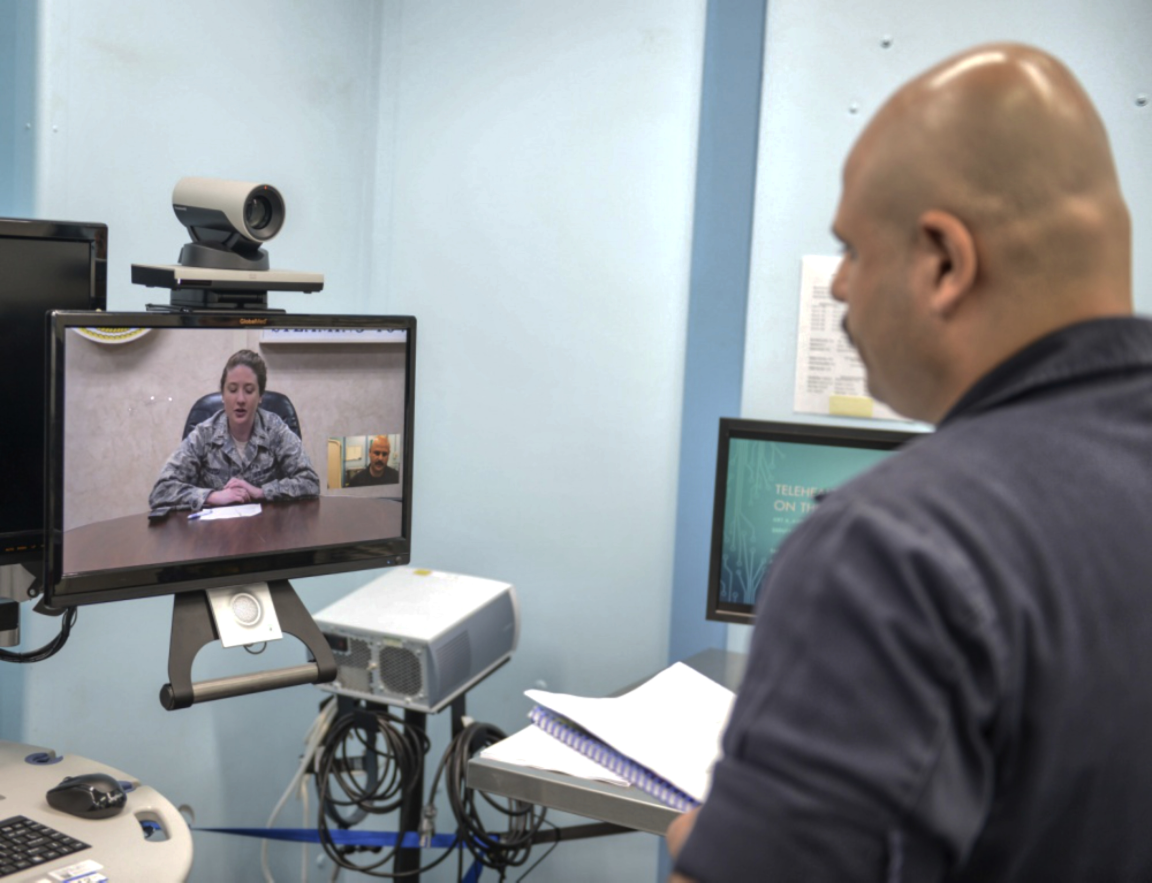The COVID-19 pandemic has had a massive impact on a number of Americans. While many people have managed to stay safe and healthy by social distancing and confining themselves and their families to their homes, many have fallen sick, been hospitalized, or worse.
The disease has also created problems for many small businesses, forcing retailers to shut their doors, restaurants to get creative and some businesses to close for good.

It’s safe to say that every single American has — in some way — been impacted by the pandemic. And, with so many people having their lives at least inconvenienced by COVID-19, it’s not surprising that the impact of this virus on America’s military has failed to garner much press or discussion — with very few, tragic exceptions.
The fact is, America’s military personnel are dealing with this global pandemic, too. And most of them are doing so while quarantined away from family, deployed away from home and in other locations that many of us would not want to be in when confronting an incredibly infectious and often fatal disease.
With the military operating under a restrictive “stop movement” order, and with personnel becoming infected with the disease in some very isolated places — including aircraft carriers and other ships at sea — there are a number of ways that satellite communications (SATCOM) can play a role in the military’s COVID-19 response. Let’s explore a few SATCOM use cases that could help the military keep soldiers safe, happy and sane during the ongoing pandemic.
Telemedicine Delivery
The most important thing in a pandemic is access to healthcare services. Unfortunately for many deployed soldiers, access to healthcare services or specialized care could be limited. And that’s not just the case overseas. Some soldiers and veterans in rural and geographically-isolated locations within the U.S. could also find themselves without access to specialized, quality healthcare services.
Telemedicine has already exploded as a result of COVID-19, with many doctors and specialists embracing telemedicine to treat patients while social distancing orders are in effect. That same technology could be deployed by the military to deliver quality care and specialized healthcare services to deployed soldiers, personnel on ships at sea, and veterans at home.
Unfortunately, in many of these geographically-isolated places, the high bandwidth connectivity and terrestrial networks needed to carry the real-time, HD video necessary for effective telemedicine implementations are either unavailable or untrusted. In those places, SATCOM can help to fill the connectivity vacuum and deliver essential telemedicine services.
With today’s advanced high-throughput satellites operating at orbits closer to Earth, the military can effectively deliver fiber-like connectivity to virtually anywhere on the planet. This connectivity could be used to deliver the real-time, high definition video teleconferencing that is needed for delivery of telemedicine services.
With satellite delivering healthcare personnel and specialists to virtually anywhere on the planet, soldiers and veterans cannot only access healthcare services that may have been previously unavailable, but they can even see medical professionals while still socially distancing.
Enabling Morale, Welfare and Recreation (MWR)
Everyone that’s currently quarantined or otherwise socially isolating themselves in an effort to “flatten the curve” is probably filling the time with a combination of on-demand movies, streaming music, downloadable books and online video games. They’re also getting support and peace of mind by calling and video chatting with their friends and families.
Those are things that we take for granted in much of America’s more populated areas. But they’re things that may not necessarily be available for deployed troops.
Imagine being unable to video chat with an elderly loved one that was diagnosed with COVID-19 because connectivity wasn’t available. Imagine not being able to have a face-to-face discussion with a spouse while quarantined with COVID-19. Imagine being quarantined with COVID-19 and not having anything to do while isolated for fear that you could infect everyone around you. This is the reality that some deployed troops face.
Satellite is the answer to delivering those communications services and capabilities to deployed soldiers. Much like how high-throughput, low-latency satellite communications can empower telemedicine implementations, they can also be used to deliver voice, video and data to practically anywhere on the planet. That means that satellite can deliver the same communications services and capabilities to deployed troops that they may have access to and enjoy in their own homes.
MWR are essential for keeping troops happy and connected during this unprecedented time. Being away from family, friends and loved ones is always difficult. Being separated and isolated during a troubling time – like during a global pandemic – is understandably mentally, physically and spiritually draining.
MWR services can help to connect troops with their support systems, provide them with entertainment while socially isolated or quarantined and ensure that morale stays high — even as America struggles with one of its most challenging crises in modern times.
This truly is an unprecedented, and candidly, quite frightening time for many Americans. It’s essential that our deployed soldiers have access to healthcare during this global pandemic. It’s essential that they be kept connected and their spirits lifted. Satellite connectivity can often serve as the best, and possibly only, way to deliver these essential services to the men and women of our armed forces wherever they’re stationed.
For additional information on the role that next generation commercial satellites can play in delivering essential government select this direct infolink...
This article first appeared at GovSat and is republished with permission.

Ryan Schradin is the Executive Editor of GovSat Report. A communications expert and journalist with over a decade of experience, Ryan has edited and contributed to multiple popular online trade publications focused on government technology, satellite, unified communications and network infrastructure. His work includes editing and writing for the GovSat Report, The Modern Network, Public Sector View, and Cloud Sprawl. His work for the GovSat Report includes editing content, establishing editorial direction, contributing articles about satellite news and trends, and conducting both written and podcast interviews. Ryan also contributes to the publication’s industry event and conference coverage, providing in-depth reporting from leading satellite shows.

